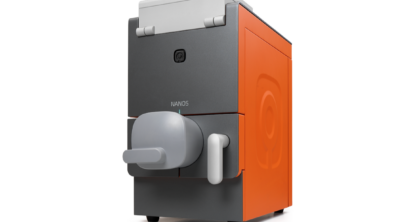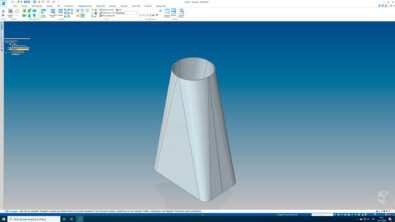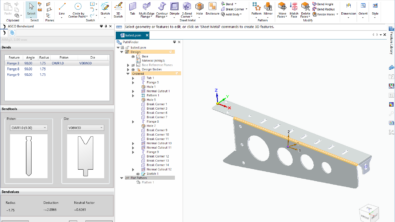ADIRA introduces new additive manufacturing process for large-scale parts

ADIRA, based in the Porto area of Portugal, has a long history of success in designing and manufacturing sheet metal machinery. Their products include press breaks, shears, laser cutting systems and tailor-made solutions. ADIRA sells its machinery in 60 different countries where it is used by manufacturers in many different industry sectors. ADIRA’s more recent focus is in the area of additive manufacturing with the development of a radical new powder-bed fusion system, the AddCreator.
Additive manufacturing using powder-bed fusion
Powder-bed fusion is a relatively recent technology that was first proposed in 1995. It uses either a laser or electron beam to melt and fuse metal powder. Distinct from sintering, powder-bed fusion fully melts the metal powder to produce a solid, homogeneous mass. This process can quickly and accurately create high strength, geometrically complex components. ADIRA’s unique implementation of powder-bed fusion additive manufacturing is called “tiled laser melting.”
Unique scaling capability for manufacturing large components
According to Tiago Oliveira, Head of Marketing at ADIRA, “A unique characteristic of the AddCreator is the ability to apply tiled laser melting to the manufacture of large-scale components. We have developed a moveable and modular build chamber that moves around the powder bed area. From a manufacturing planning perspective, larger components are divided into smaller segments. By using our proprietary scanning strategies, scan fields are overlapped guaranteeing the correct “stitching” of the tiles. This results in highly accurate and homogenous parts.”

The combination of manufacturing large components and the 100 micron accuracy of the laser system is resulting in interest in AddCreator from manufacturers in different industry segments. One example is from the aerospace industry for the manufacture of turbine rotors. These components feature curved geometries and complex internal chambers and are very expensive to manufacture using traditional machining methods.

Using Solid Edge to design the AddCreator
ADIRA has been using Solid Edge successfully for several years for the design of their sheet metal manufacturing machinery. They are now applying this knowledge to the development of the AddCreator. The complete AddCreator machine includes structural elements, sheet metal housings, a gantry system to position the build chamber, and high precision electromechanical sub-assemblies. According to AddCreator’s project manager João Paulo Santos, “We have created an accurate 3D CAD model of the complete machine with over 15,000 components. Solid Edge enables us to work accurately on this very large assembly. For example, our designers can specify that certain areas of the assembly are made ‘inactive’ when they are focused on other areas. This improves the interactivity of the system for our designers.”

João also describes some of the benefits that ADIRA is achieving using unique synchronous technology inside Solid Edge: “Synchronous technology allows us to design faster and make changes more easily. One example of the power of synchronous technology is its ability to work with 3rd party CAD data. One of our partners provides us with STEP files of the components they develop and manufacture for us. Using synchronous technology, we access the complete 3D design, use it in our assemblies, and directly edit intelligent features such as holes.”
Partnering with Cadflow and Siemens
João continues, “We also receive high quality technical support from our local channel partner Cadflow. We work with Cadflow for training in specific areas of Solid Edge for our designers. We also participate in their webinars on specific Solid Edge capabilities – for example on the design of structural steel frame elements.”

In the future, ADIRA plans to investigate additional capabilities of Solid Edge. These include generative design, technical publications, electrical circuit design, and improved data management capabilities. ADIRA uses Siemens SINUMERIK CNC controllers for its machines. Closer integration of the mechanical, electrical and software aspects of their designs is another area where ADIRA sees interesting possibilities for future collaboration with Siemens.


